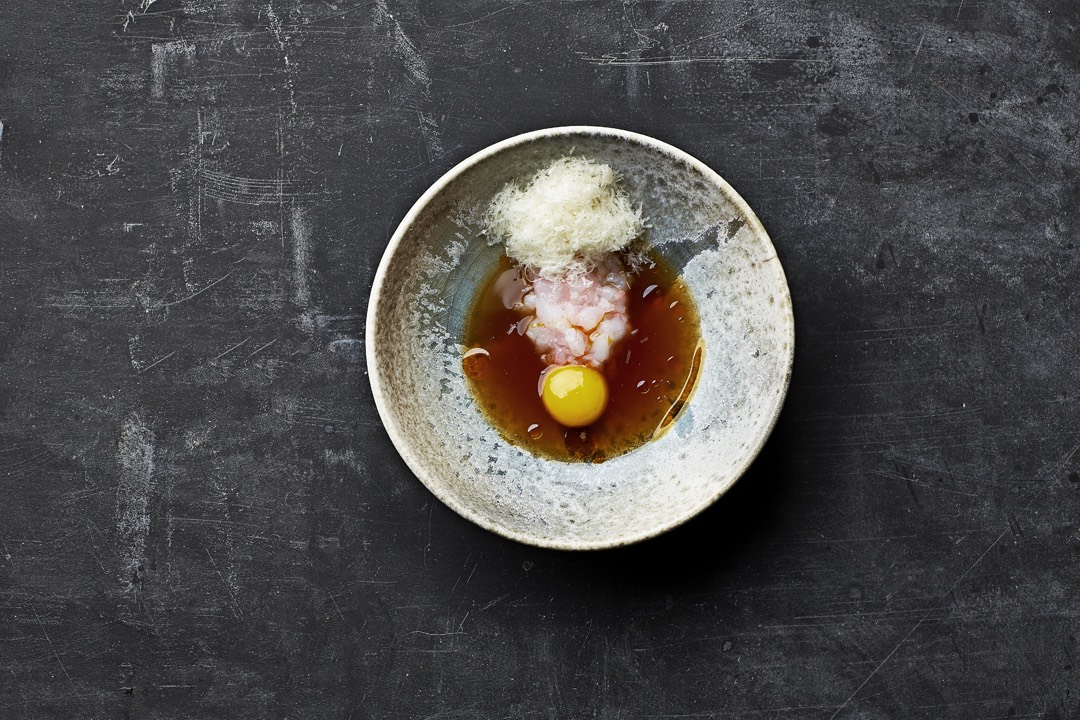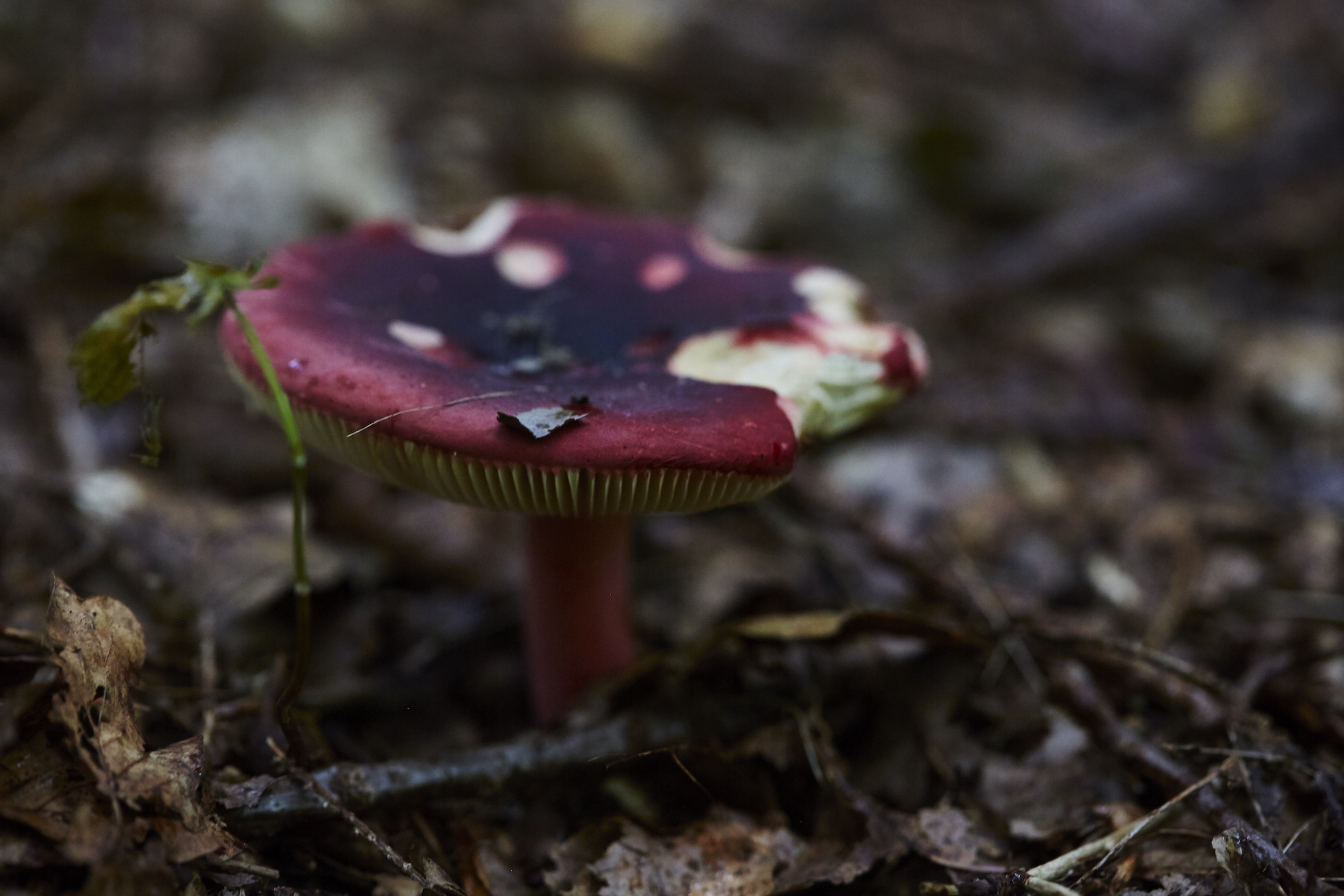
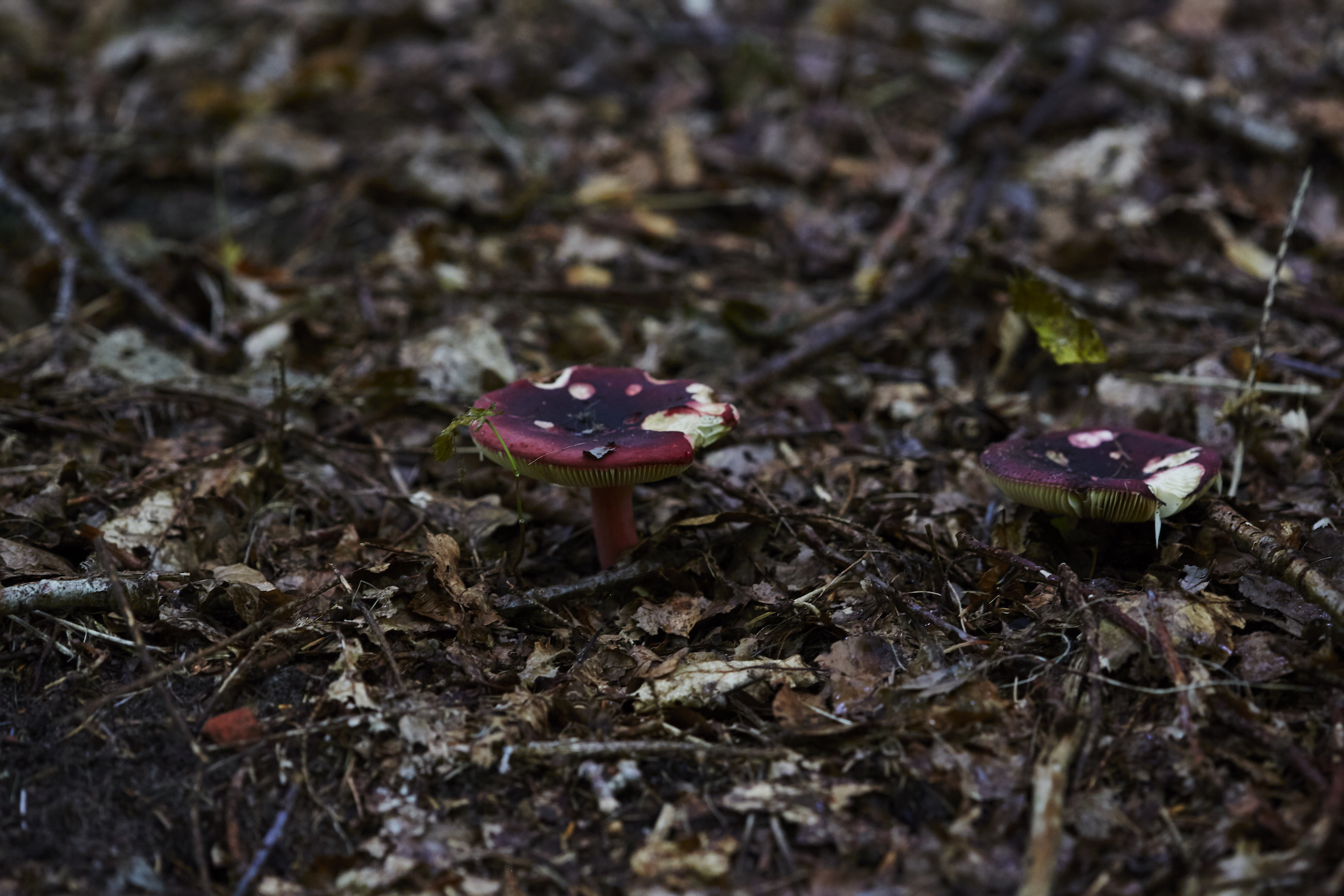
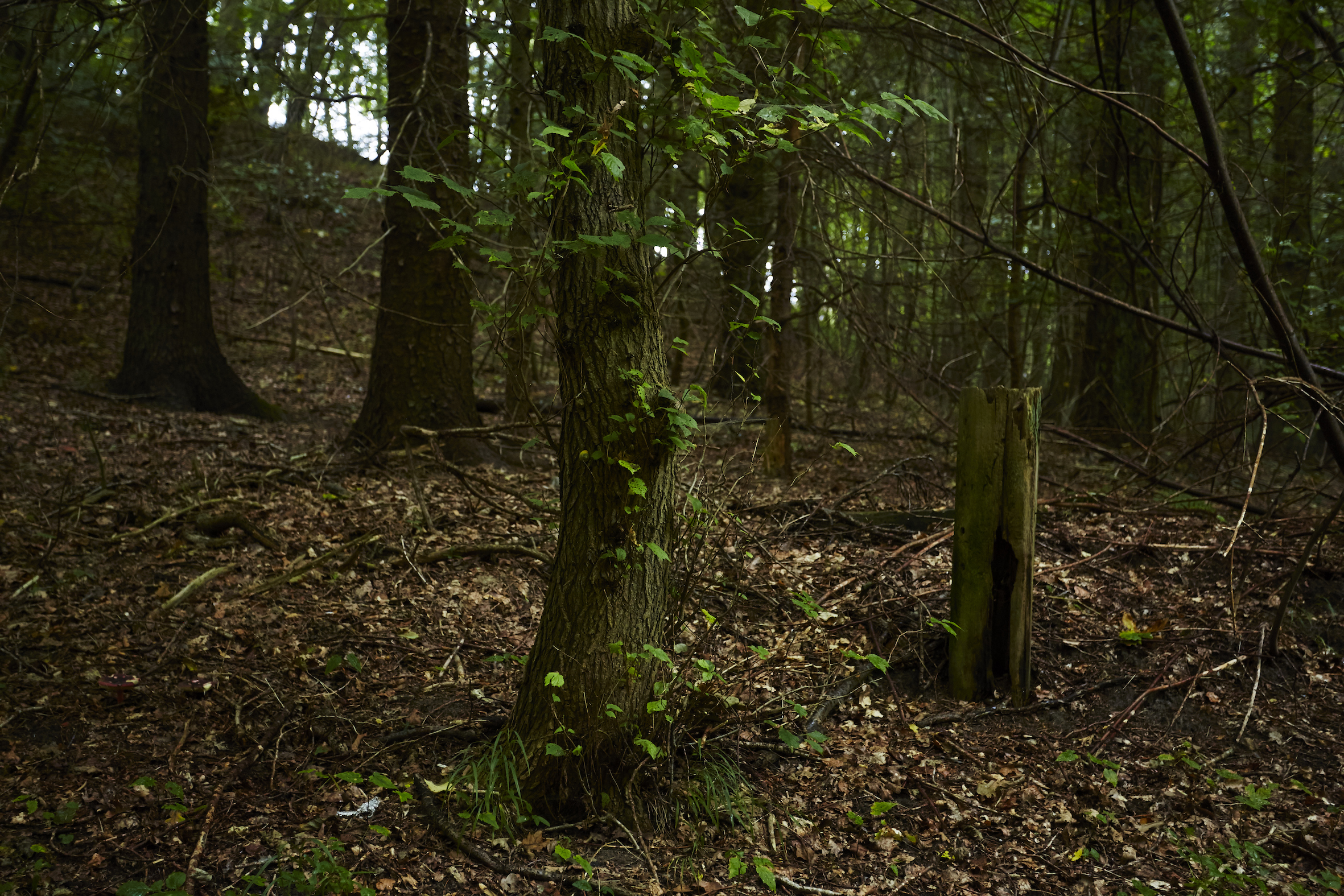
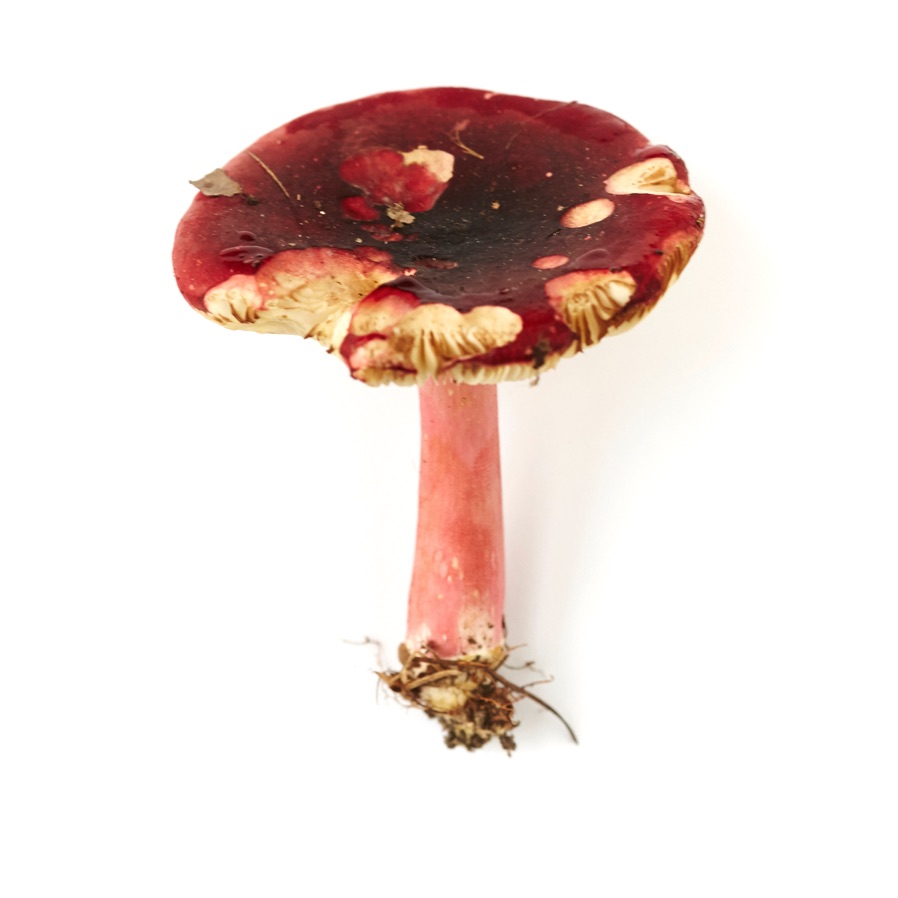
Crab brittlegill
More than a hundred kinds of russulas grow in the wild in Denmark. Common to them all is their fragile porous structure—the stems nearly disintegrate in your hands. For foragers, the crab brittlegill, with its distinctive shellfish flavor, is probably the most desirable mushroom of all.
-
Where to Find It
Crab brittlegills always grow with conifers, especially pine trees. You'll often find them in groups, but a single specimen may also pop up all on its own here and there.
Coniferous forests.
-
When to Find It
You'll normally find crab brittlegills in September and October, but sometimes they appear earlier too.
Entire mushroom: August, September, October.
-
How to Spot It
The most eye-catching trait of the crab brittlegill is its dark red color, which darkens almost to black at the center of the cap. Otherwise dry, its cap turns shiny and viscous when rain falls; its underside is sticky in all types of weather. The largest crab brittlegills measure between 10 and 15 cm in diameter and grow to be up to 10 cm tall. Their stems are two to three cm thick and are white tinged with pink.
-
How to Pick It
Carefully twist the mushroom loose or cut it at the foot. Larvae may attack crab brittlegills, so check the cut to see if the mushroom is infested with vermin or if the flesh is even.
Risk of misidentifying the plant
There are many different russulas in Danish forests, and not all of them are suitable for cooking. As a rule of thumb, you can take a bite of any russula; if it's very bitter or has a strong flavor, leave it behind—it’s not necessarily toxic, but not readily edible either. If, on the other hand, the flavor is pleasant and mild, you can eat it regardless of whether it's a crab brittlegill or one of its many cousins.


